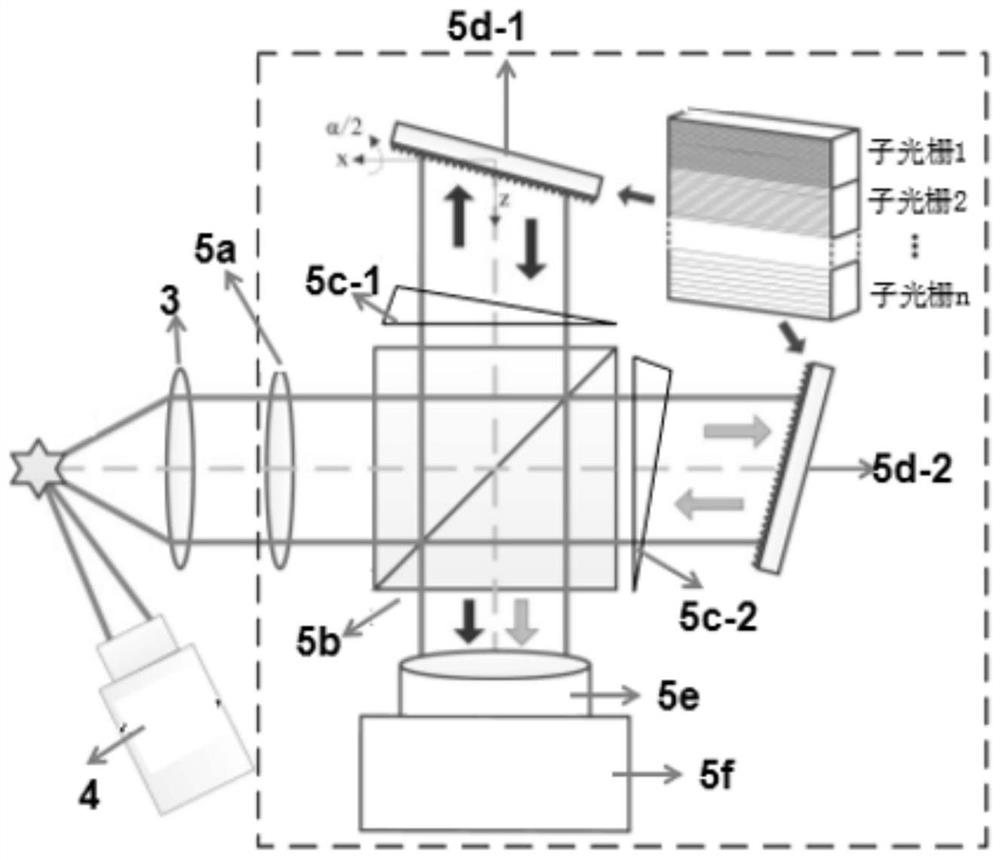A rapid detection system and method for microplastics in offshore sediments
A detection system and microplastic technology, applied in pattern recognition in signals, analysis materials, measurement devices, etc., can solve the problems of incomplete information acquisition, long time-consuming, low work efficiency, etc., and achieve improved spectral resolution and improved resolution , the effect of high luminous flux
- Summary
- Abstract
- Description
- Claims
- Application Information
AI Technical Summary
Problems solved by technology
Method used
Image
Examples
Embodiment 1
[0101] A rapid detection system for microplastics in offshore sediments based on spatial heterodyne differential Raman spectroscopy, such as figure 1 As shown, the system includes a three-dimensional electric translation stage 1, a visual light source unit, a microscopic unit 3, a tunable laser 4, a spliced grating-type spatial heterodyne Raman spectrometer 5, a fluorescence imaging unit 6, and a data acquisition and storage unit 7;
[0102] A sample stage 1a is arranged on the three-dimensional electric translation stage 1, and a microscopic unit 3, a non-polarizing beam splitter cube 4d, and a fluorescence imaging unit 6 are sequentially arranged above the sample stage 1a, and the fluorescence imaging unit 6 is connected with a data acquisition and storage unit 7 ;
[0103] In this embodiment, the calculation accuracy of the three-dimensional electric translation stage 1 is 0.1 μm. The three-dimensional electric translation platform 1 has the functions of automatic positi...
Embodiment 2
[0125] The detection method of microplastics in the offshore sediment based on the rapid detection system that embodiment 1 provides, such as image 3 As shown, it specifically includes the following steps:
[0126] (1) Offshore sediments were sampled with a Van Veen grab sampler, and the collected samples were wrapped with double-layer aluminum foil and put into a polyethylene tight bag, frozen in a 4°C refrigerator, transported to the laboratory and placed in - Store refrigerated at 20°C.
[0127] (2) Before the experiment, the samples need to be thawed in a fume hood, placed in clean beakers and sealed with aluminum foil, and dried in a 60°C oven to constant weight for further processing.
[0128] (3) For sediment samples dried to constant weight, each 10 g of sediment samples was treated with 50 mL of hydrogen peroxide for 24 hours, with a volume fraction of hydrogen peroxide of 30%, to remove natural organic matter and eliminate fluorescence interference caused by natura...
PUM
| Property | Measurement | Unit |
|---|---|---|
| diameter | aaaaa | aaaaa |
| density | aaaaa | aaaaa |
Abstract
Description
Claims
Application Information
 Login to View More
Login to View More - R&D
- Intellectual Property
- Life Sciences
- Materials
- Tech Scout
- Unparalleled Data Quality
- Higher Quality Content
- 60% Fewer Hallucinations
Browse by: Latest US Patents, China's latest patents, Technical Efficacy Thesaurus, Application Domain, Technology Topic, Popular Technical Reports.
© 2025 PatSnap. All rights reserved.Legal|Privacy policy|Modern Slavery Act Transparency Statement|Sitemap|About US| Contact US: help@patsnap.com



